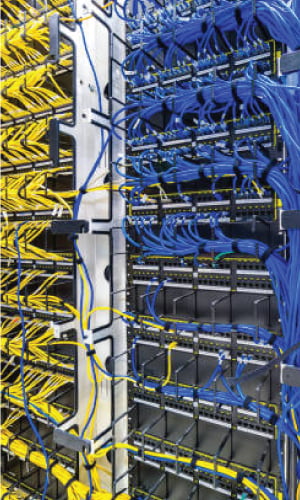Dive into the intricacies of network hubs (NGHs) with our comprehensive guide! Whether you’re a networking novice or a seasoned pro, this blog post is your go-to source for all things related to network hubs. From unraveling the different types of network hubs to exploring their key features and practical applications, we’ve got your back. Let the journey into the captivating world of network hubs begin!
What are Network Hubs (NGHs)? Network hubs serve as the linchpin, connecting multiple devices within a network and facilitating the seamless sharing of files, printers, and resources among all connected devices. These versatile hubs can also function as central management stations, overseeing various networking tasks. There exist different types of network hubs: physical, wireless, and Ethernet hubs. Physical hubs connect via cables, wireless hubs utilize radio waves, and Ethernet hubs rely on twisted-pair cables.
Features of Network Hubs: Network hubs boast a plethora of features tailored to diverse scenarios. These features enhance their utility and make them indispensable components in networking setups.
How Can I Use a Network Hub? Embarking on the journey of using a network hub involves a few essential steps. Begin by selecting the appropriate type of hub for your needs. Once chosen, follow these steps for a seamless setup:
- Connect the network hub to your devices using approved cables or adapters. This step is crucial for the correct configuration of the hub.
Whether you’re delving into the basics or seeking advanced insights, our guide provides the comprehensive information you need to harness the power of network hubs. Explore, learn, and make the most of this fundamental element in the realm of networking!
Table of Contents
Activate your hub, delve into the intricate settings, including address assignment and security measures. Need guidance in hub setup? Turn to the manufacturer’s instructions or explore online resources for invaluable assistance.
Network hubs, those electronic marvels facilitating resource sharing among myriad devices, come in assorted shapes and sizes. Bridges effortlessly connect networks, employing port forwarding wizardry. Switches, more sophisticated, configure multiple networks on a single device, bestowing visibility and management protection. Extenders, the chameleons, elongate networks, linking additional devices with a medley of wired and wireless connections. The allure of these hubs extends from homes to businesses, weaving connections that seamlessly link computers and devices while sharing the bounty of files, printers, and resources.
Why embrace the network hub?
A conduit to enhanced connectivity, these marvels birth faster connection speeds and fortified security features. Perfect for homes, businesses, and schools, network hubs offer a tapestry of advantages.
Behold the diverse hubs, each tailored to specific realms: Home Network Hubs, fostering DLNA-fueled media sharing; Workplace Networking Hubs, gatekeepers to secure device access and traffic flow; and School Networking Hubs, unifying districts into a web of shared resources across wide area networks.
Curious about selecting a network hub?
When diving into the marketplace, ponder your needs and devices. More ports for a bustling home or advanced features like WiFi extenders? Tailor your choice to the connecting devices’ needs—whether smart TVs craving wireless embrace or wired warriors seeking steadfast connections. The hub landscape sprawls with choices, from port-rich titans to antenna-clad speed demons. Prices fluctuate; tread wisely to find the nexus of features and budget.
Dive into the hub realm, where types dictate benefits. Routers, stalwart companions for diverse device support, port offerings, WAN optimization, and firewall fortitude. Switches, jugglers of massive networks, armed with management prowess for a smoother digital ballet. Access Points, wireless enchanters connecting devices with an internet nod. The hub’s application tapestry unfurls in varied network landscapes, linking peripherals and propelling networks toward completeness.
A network’s heartbeat pulses through hubs. They centralize connections, simplify networking complexities, and unfurl a symphony of applications. A LAN’s embrace brings workstations together, a physical kinship that may extend further with switches and routers. WLANs dance through radio waves, wire-free but with a tethered range.
What wizardry distinguishes network hubs?
A central nexus for device connectivity, simplifying the networking labyrinth. Towers, switches, and bridges — each a hub archetype weaving a connectivity tale. Tower hubs grace small offices, and USB ports extend power and connectivity. Switch hubs, akin yet adorned with built-in switches, cater to sprawling offices where myriad devices crave simultaneous network dalliances. Bridge hubs, the alchemists, fuse switch finesse with hub expansion, creating a hybrid that honors legacy infrastructure.
Beware the hub’s pitfalls! Often costly and less functional than routers, their packet-forwarding languor can plague larger corporations. Choose wisely; for in the hub’s world, needs and budgets intersect.
In the hub-switch-router ballet, hubs occupy the inception dance. Dancers were identifiable by physical traits, software roles, and network functions. A LAN, a digital theater, each dancer’s role aligning for a harmonious networking crescendo.
The hub or switch conundrum intrigues me. Hubs, crafting connections, hubs lacing networks with simplicity. Wireless whispers or copper-clad speed, hubs weave options. Should you play in the wired or wireless realm? Wired hubs, swift in their copper ballet. Wireless hubs, radio wave poets, slower but beckoning simplicity.
Connection tales continue; hubs sprawling in and out of computers, connecting printers, smart TVs, game consoles, audio players, and the digital orchestra. Varieties emerge, wired and wireless coexisting. Gigabit Ethernet speeds or parental controls for the digital playground — hub choices, are vast and varied.
Enter the NIC, hub, router, and switch quartet. NICs whisper to the outside world, hubs distribute, routers direct, and switches bring layer-switching finesse. Hubs, the central nexus, weaving connections for printers and storage to dance with computers.
But alas, hub weaknesses surface. Expensive and functionality-limited, they linger in small business shadows. The hub-switch duality beckons — understand the roles, and make informed choices.
Switches, the network maestros, conduct a symphony of connectivity. D-Link, Linksys, Apple — each a conductor with distinct notes. Layered prowess in the dance of packets. Discover the harmony; understand the symphony of switches.
Device identification unfolds in layers.
Physical markers, IP addresses, software roles — each a tale of recognition in the network saga. Roles unfold — local systems, domain controllers, web servers. Printers are recognized by names or IP signatures. Networking’s dance, where recognition guides access.
Hub and switch, the origin conundrum. Hubs, are pioneers in linking computers, forwarding data packet by packet. Switches, the evolution, routing traffic with direction. Each with roles, each a chapter in the networking novel.
Ethernet switches emerge, bearing features and applications. Ports in a rack dance, internal switching fabrics orchestrating traffic. Isolation, the key, letting devices frolic without interference. A network’s heartbeat switches balancing performance and features.
Collision domains, the battlegrounds of hubs. Nodes clash, data packet wars and hub struggles ensue. But switches, with their port isolation magic, avert collisions. Lag-free realms, smooth online symphonies.
Hub applications unfurl — video streaming, file sharing, VoIP telephony, gaming, social networking, and enterprise IP telephony. Vital hubs, weaving through networks, embracing various forms, each with its own features and applications.
Ethernet switches, the traffic cops. Advanced features, capacity for high traffic, port isolation magic. The symphony of Layer 2, 3, and 4 dances, offering diverse services concurrently. Prioritizing performance and features, Ethernet switches rule the high-traffic realms.
Switches, free from collision domains. Hubs bear the burden, collision-prone realms where data dances collide. Switches rise, managing traffic, handling more, minimizing lag. Hubs, the relics; switches, the future.
Switches turning into hubs? A configuration twist, logical centers redirecting traffic. A switch, hub duality, bending to the whims of setup. Versatility, the cloak hiding the switch’s hub nature.
Half-duplex hubs, the dual dancers. Simultaneous transmission and reception, but only in one direction at a time. Full duplex hubs, the acrobats, twirling data in both directions simultaneously.
The traffic cop of networks, the hub device. Network hubs, central points in the symphony, aggregating and redistributing traffic. Ethernet, USB, Wi-Fi — each a hub variant, with QoS capabilities and power considerations.
Ethernet transceivers, RD 2308s, grace networks with versatility. Wired or wireless, they find homes in small abodes and businesses alike. Devices, like WAPs join the dance, transmitting radio waves as routers, cameras, monitors, and phones, join the multipurpose masquerade.
Identification unfolds, and devices are labeled by physical traits, software roles, and network functions. IP addresses, software roles, roles in Windows realms — each device playing a part. Printers, recognized by driver names or IP signatures, add to the recognition dance.













